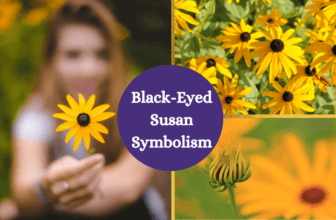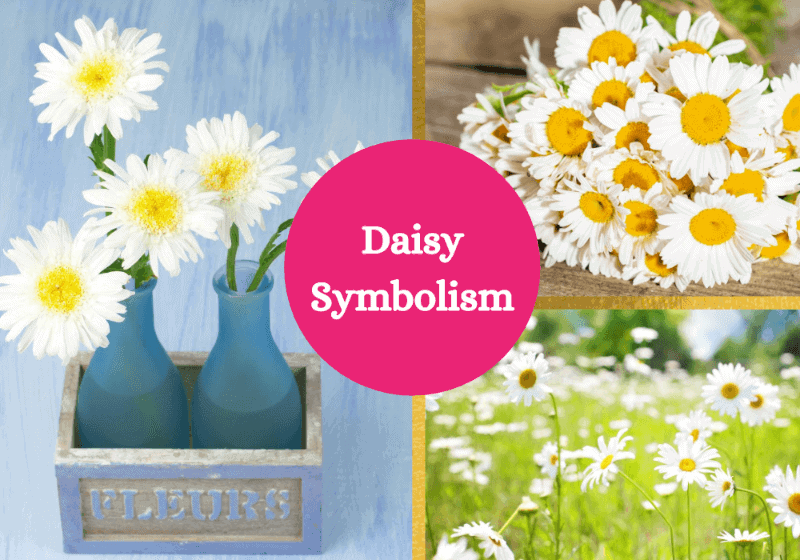
Table of Contents
The birth flower for April, Daisies are among the prettiest and best-known flowers, loved for their simplicity and beauty. They are also highly symbolic flowers. Let’s take a look at what daisies mean and how they’re used.
Daisy Characteristics and Facts
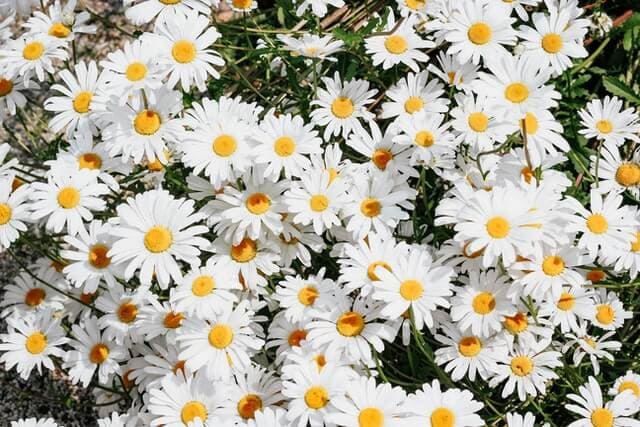
Daisies are small round flowers, with a yellow center, originally found in western Asia and Europe, but now found around the world. The flower belongs to a group of plants under the Asteraceae family. Incidentally, the name Asteraceae is derived from the Latin term aster or star which perfectly describes the physical characteristic of this flower.
The word daisy is derived from the term, day’s eye. This was because the flower would close at night and reopen at daytime, much like an eye that went to sleep at night and awoke in the morning. This association of the daisy with the new day is also where we get the phrase fresh as a daisy from. The phrase ups-a-daisy was used to encourage a child to stand up after a fall, from which came the modern phrase oopsy-daisy which is said when one makes a mistake.
Some other names for the daisy include garden daisy, meadow daisy, or English daisy. The plant can grow as high as 20cm and thrives in rich and moist soil, usually growing on lawns, meadows, and roadsides. Despite its beauty and fame, daisies are often considered to be weeds.
What Do Daisies Symbolize?
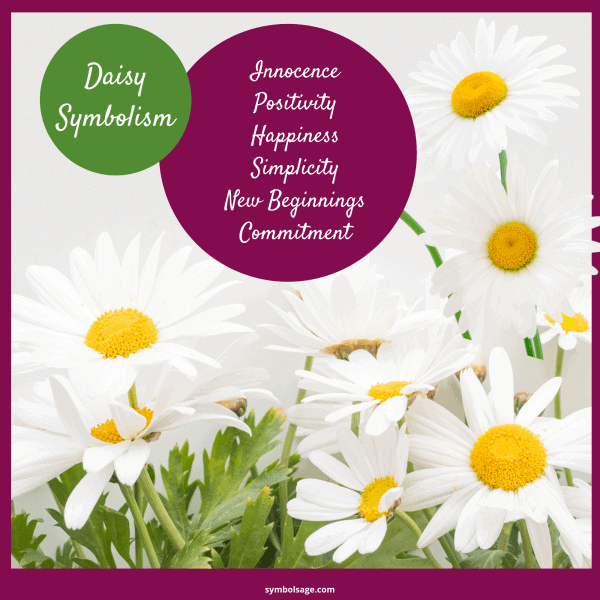
In general, daisies represent simplicity, positivity, and happiness. It’s often associated with the following: innocence, purity, chastity, fertility, motherhood, childbirth, new beginnings, transformation, humility, true love, and cheerfulness.
Apart from this, the daisy also has connections to various cultures and groups, where the flower has acquired various interpretations:
- Daisy in Christianity – In the Christian world, the daisy is often associated with the image of the Virgin Mary. Daisy represents chastity, innocence, and humility.
- Daisy in Roman Mythology – The daisy was linked to a popular nymph known as Belides. She decided to transform herself into a daisy to avoid unwanted attentions from her admirer, Vertumnus, god of seasons and gardens. The Latin word for Daisy, Bellis, is derived from the name.
- Daisy in Celtic Culture – According to Celtic legend, the Celts believed that when a child dies, the gods scatter daisies over their grave to lift up the spirits of the parents. This is where the daisy’s association with purity and innocence springs from.
- Daisy in Norse Mythology – The daisy is associated with Freya, the love goddess. Known as Freya’s sacred flower, daisy represents motherhood, childbirth, and fertility. It was customary for people to give daisies to new moms.
- Daisy in Paganism – Daisies were thought to represent the sun and stars because of its appearance.
- Daisy in Victorian England – During this era, the daisy signified departure. Daisies were usually paired with ferns that embody sincerity.
While daisies are known for their white petals, they also come in varying colors. These can have different symbolism.
Pink daisies represent love and romance but can also symbolize feminine power. Yellow daisies symbolize happiness and friendship. They are often given to a friend or used as a decoration inside the house to bring positive energy. Red daisies are linked to passion. Giving red daisies to someone can signify your commitment and devotion to them.
Uses of the Daisy
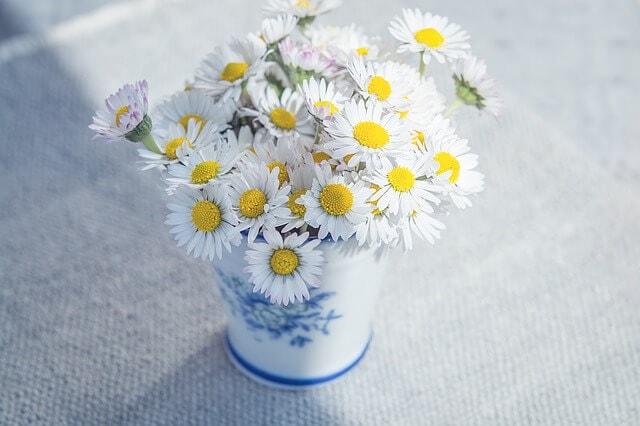
Daisies are used for medicinal purposes, particularly the flower heads and leaves. Daisy tea is known to provide numerous health benefits and is often used to treat inflammation, cough, bronchitis, and kidney disorders.
Wild daisies can be applied directly onto the skin and serves as a remedy for wounds as well as other skin diseases. It can also be used as an astringent. In some cases, people use wild daisies to treat pain, swelling, minor bleeding, and prevent complications during childbirth.
Daisies also serve as an ingredient in salads and can be used as frosting in cakes.
Disclaimer
Daisy is also a popular design in jewelry. As a symbol of hope and renewal, this popular flower is used as an accessory whether in the form of a pendant or bracelet. It’s an excellent gift for someone who is starting a new journey.
The name Daisy is one of the most popular names derived from a flower. It ranks next to Delilah among women named after the letter D.
Wrapping Up
A favorite in any garden, daisies continued to be loved for their prettiness and ability to liven up any room. As a flower that holds a lot of meaning, daisies are also perfect to give to loved ones or to include in bouquets.







